Eight amazing carols you won’t hear on the doorstep this Christmas
Had enough of Hark the Herald? Weary of We Wish You? Jaded by Jingle Bells?
It’s not that these aren’t great tunes. And, yes, Christmas wouldn't feel properly, well, Christmassy without a generous helping of the traditional favourites.
But there are so many more fantastic seasonal songs to explore.
Here are some of our favourite, lesser-known carols that we think deserve an outing around your Christmas tree this year.
Sankta Lucia
This sweet, catchy carol is relatively unknown in the UK but it’s sung a lot in Sweden.
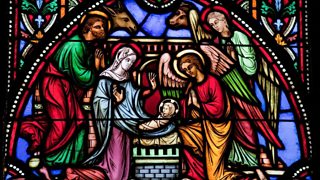
Swedes have all been singing this since they were children.
It’s traditionally sung on St. Lucia’s day (13th December) as boys and girls, carrying candles, process behind the girl who has been crowned "Lucy" that year. "Lucy" gets to wear a whole crown of lighted candles!
Incidentally, the tune isn’t native to Sweden. It first belonged to a traditional Neapolitan song.
Featured carol - Sankta Lucia performed by Nacka Music School Choir, Sweden.
The Wexford Carol
Vaughan Williams loved this ancient Irish tune enough to include it in his 1928 "Oxford Book of Carols".
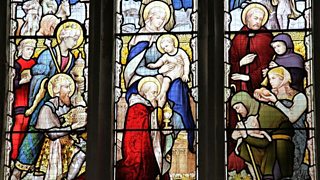
It subsequently appeared in many other modern carol books. Despite this, it remains a relatively rare treat at carol concerts and services.
It was "discovered" by W. H. Grattan Flood, organist at St. Aidan's Cathedral in Enniscorthy, who heard it performed by a local singer.
The words and music have been known in Ireland for centuries, and the carol traditionally sung by men only.
Its gently lilting melody lends itself equally well to classical choral arrangements or traditional folk singing styles.
Featured carol - The Wexford Carol performed by Golden Bough.
Carol of the Birds
Not the Catalan carol of the same name, but one of Australia’s favourite Christmas songs.
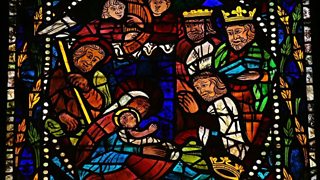
It’s full of traditional Christmas cheer, and also a wonderful celebration of nature in the full flush of summer.
Brolgas are dancing, Currawongs chant in wattle tree bowers, and bush birds sing Orana! to Christmas Day.
It’s impossible to sing this and not smile.
Featured carol - Carol of the Birds performed by The Imogen Children’s Chorale.
The Huron Carol
This carol was written by Father John de Brébeuf.
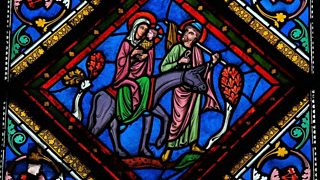
He was a 17th century Jesuit missionary who travelled to what is now modern Canada.
He lived among the Huron-Wyandot people for 23 years, and wrote these words in their native language, setting them to an old French tune.
The song was passed down through oral tradition, until it was discovered by the wider world around 150 years later, and translated into English and French.
Featured carol - The Huron Carol performed by Chicago a-cappella.
Away in a Manger
Away in a Manger is undeniably one of the best known and best loved carols on either side of the Atlantic.
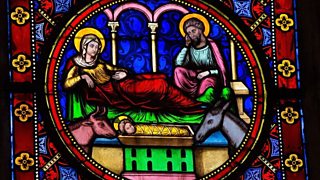
Both of the alternative tunes are equally familiar.
"Cradle Song" by Kirkpatrick is best known in the UK, "Mueller" by James Ramsey Murray is favourite in the USA.
However, neither of these melodies are original to the words; and this carol has been set to dozens of melodies since it first became popular in the 19th century.
We’ve chosen the beautiful and solemn French tune suggested by Reginald Jacques in his 1961 volume, "Carols for Choirs".
Featured carol - Away in a Manger performed by Choir of Durham Cathedral.
O Jesulein süß (Dear Jesus sweet)
The words of this German tune are not a million miles away from "Away in a Manger".

The three verses are a lullaby to the baby Jesus asleep in his cradle.
“Ah sleep, close thine eyes, sleep and give us eternal rest.”
The words and melody are in a Cologne songbook of 1623 and have the typically four-square, slightly plodding meter of many Lutheran hymn tunes. This unassuming carol is elevated to something very special in the harmonization by J.S. Bach.
Featured carol - O Jesulein süß performed by Choir of New College, Oxford.
Es ist ein Ros' entsprungen (A Spotless Rose)
A working knowledge of the old testament is helpful in understanding the words here:
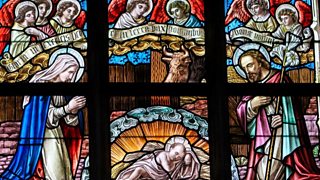
“A spotless Rose is blowing / Sprung from a tender root/ Of ancient seers foreshowing / Of Jesse promised fruit..”
The "Jesse Tree" is an image taken from Isaiah; it represents the family tree of Jesus and his ancestor, Jesse of Bethlehem. Verse two goes on to explain that the rose represents Mary, mother of Jesus, whose birth was prophesised by Isaiah. The startling image of a spring flower blooming “amid the cold, cold winter and in the dark midnight” inspired this beautiful and ancient German tune.
The gentle syncopations at the end of each line impart a rocking motion to the melody and remind us that motherhood lies at the heart of this Christmas story.
Featured carol - Es ist ein Ros’ entsprungen performed by The Netherlands Bach Society.
Ar gyfer heddiw'r bore (For the sake of this very morning)
For many people, part of the magic of Christmas is heading out to church late on Christmas Eve to celebrate Midnight Mass.

In parts of Wales, midnight isn’t nearly late enough. The Plygain service traditionally takes place between 3am and 6am. Parishioners would bide their time during the small hours by decorating their houses, singing and dancing, and making toffee.
The Plygain tradition declined in the 19th century, but still survives in some parts of Wales.
The service is led by the carol singers themselves who take turns to perform traditional Plygain carols which, like this one, often include verses about Christ’s crucifixion.
Featured carol - Ar gyfer heddiw’r bore performed by John Lewis, Guto Lewis and Angharad Lewis.
Related Links
-
![]()
How well do you know your Christmas Carols?
Take our quiz to find out.
-
![]()
When carols aren't always what you think
Lisa Colton introduces us to the history of carol singing at Christmas.
-
![]()
More on Christmas music, from Radio 3
Head to the Radio 3 homepage for more festive delights.
Contact Us
Please tell us what you think about our selection of carols, and whether there are any others you would recommend.
To contact us email: choirandorgan@bbc.co.uk.



